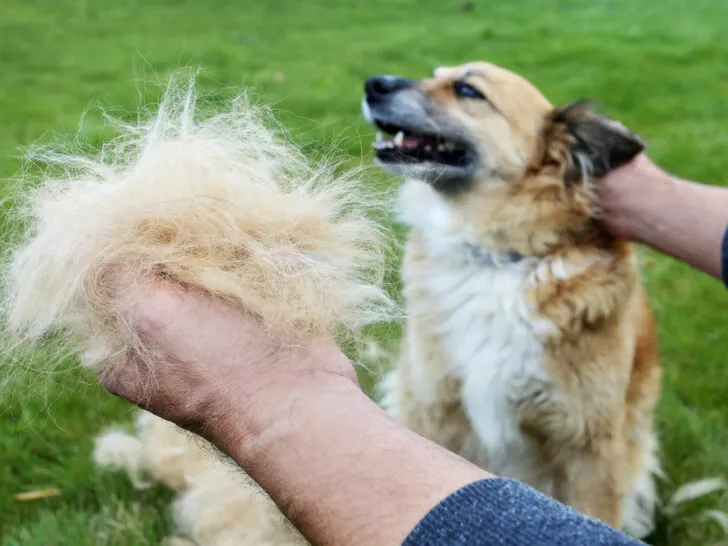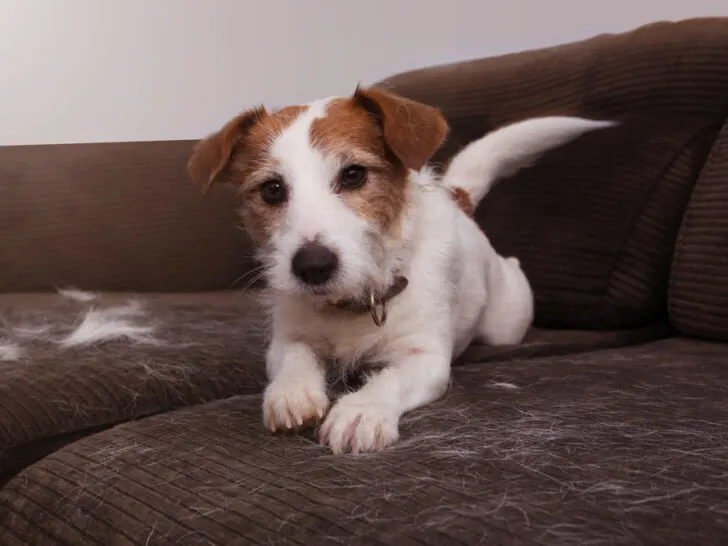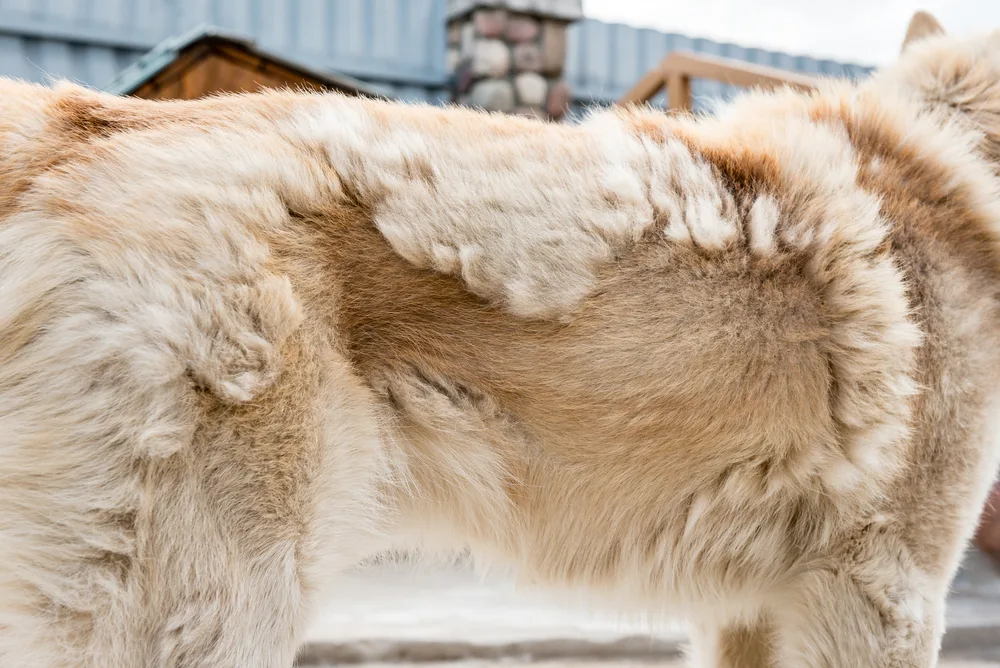Puppy shedding fur is a common occurrence. It should never come as a surprise, especially if it happens at the right or expected time.
Typically, puppies shed their fur around Spring time or in the Fall season. Most new pet parents assume that temperature changes are responsible for this shedding.
However, in a real sense, puppies shed due to light exposure. The more your puppy is exposed to light, the higher their chances of losing more hair.
This explains why dogs/ puppies kept indoors also lose a lot of hair—the artificial light influence.

Note that even the non-shedding breeds also lose hair at some point. However, this happens slowly and in minimal amounts.
For example, they grow hair for 7 years before losing it. However, the puppy hair doesn’t count since all dog breeds shed this first fur/ hair.
How to Control the Shedding
Since puppies will shed their fur at some point, the best thing to do is prepare for it. It is possible to overcome the fur nuisance by sticking to the following tricks.
- Brush your dog’s fur regularly. Do this more for dogs with longer fur or those that tend to shed more frequently
- Choose a slick or pin brush for this. This brush penetrates deeper into the puppy’s fur and removes most shedding fur.
- Make sure to take the dog outdoors. The wind will naturally blow away some shedding furs and save you the pain of vacuuming them.
When Should You Be Concerned With the Shedding

The shedding should become a concern if you suddenly cannot seem to get it under control. While puppies naturally shed their fur, this should not happen excessively.
If you notice unusual shedding, contact a vet for an examination. Most dogs over-shed their fur when there is an underlying condition to be fixed.
You may notice a few bald spots in case of over shedding. Consult a vet immediately to get things under control.
But Why do Puppies Shed Coats?
Technically, puppies are born with soft coats. This fluffy fur is a protective mechanism.
It helps to regulate the temperatures of the puppies. Your puppy will feel more comfortable.
Over time as the puppy matures, the soft fluffy fur is replaced by a tough, thick, and stiff coat. Depending on the dog breed, some dogs develop double layers of fur.
The undercoat is softer than the top coat. This distinction happens due to shedding.
Single-coated breeds also develop unique traits of fur as adults. Each dog has distinct coat traits, the most common being short, curly, long, and silky.
During this transition phase, dogs lose their puppy coats and develop adult fur. They also get a new fur color.
The dog coats get distinct colors and patterns. This is what makes it easy to differentiate the different dog breeds.
When Does the Shedding Begin?

In most cases, most dogs will begin shedding their fur at 4 to 6 months. However, this duration is not definite for all breeds, as others begin as early as 12 weeks old.
The shedding can go on until the dog turns one. The shedding also varies from one dog to another.
It may be dramatic and difficult to miss. The shedding may also happen unnoticeably, especially for short-haired breeds.
Most pet parents notice dog breeds having uneven fur due to excessive shedding. The coats may be bad to the extent that they are unsightly.
Do not expect all dogs to shed the same, even when they are of the same breed. Treat each dog individually and help them when you can by ensuring proper grooming.
Invest in a balanced diet, too, as this helps develop healthier fur. The shedding period also varies.
Exercise patience as a pet owner and be there for your fur baby. Ensure the dog is well hydrated by always providing clean drinking water.
Take time to bind with your fur baby when grooming them. This is a time when the puppy gets to learn and appreciate you as its owner.
When the Shedding is Problematic and Abnormal

While the puppy is expected to shed naturally, observe traits that indicate an abnormality. It is best to bring something in for observation if something seems off.
Act quickly if you notice the following symptoms:
- Scaly skin
- Bald spots/ bare skin spots
- Inflamed or red skin
- Excessive scratching
- Loss of large patches of fur
In most cases, these symptoms indicate a bigger problem than you know. It could be a case of alopecia caused by different significant issues.
Fleas, mites, and ticks could be behind it. It can also be caused by fungal and bacterial infections and Cushing’s disease.
Other triggers include poor feeding, hormonal imbalance, stress, and inflammatory disease. Note that you cannot identify such conditions unless a vet is involved.
Puppies are all fun to raise until they develop complications. Be sure to pay attention to all changes occurring in their lives to act fast.
Sometimes timely intervention makes a huge difference. Prioritize your puppy’s health first.
People Also Ask
At what age do puppies lose their puppy fur?
Most puppies begin to shed their fur from 4 to six months. This can go on until the puppy is a year old. Some puppies begin shedding earlier, at 12 weeks.
Why is my puppy shedding so much all of a sudden?
Reasons for the sudden shedding of fur in puppies and dogs vary. Sudden unexpected shedding should be alarming. It results from parasite infestation, infections, and different autoimmune diseases. Conditions such as cancer may also trigger it.
What should I do if my puppy is shedding?
There are several interventions one can take to help manage normal puppy shedding. These include:
- Brushing the puppy
- Feeding the dog with a balanced diet
- Supplementing with a fatty acid supplement
- Vacuuming your space often
- Covering sensitive furniture
- Regular bathing, especially in summer
- Using the correct brush to get all the fur.
